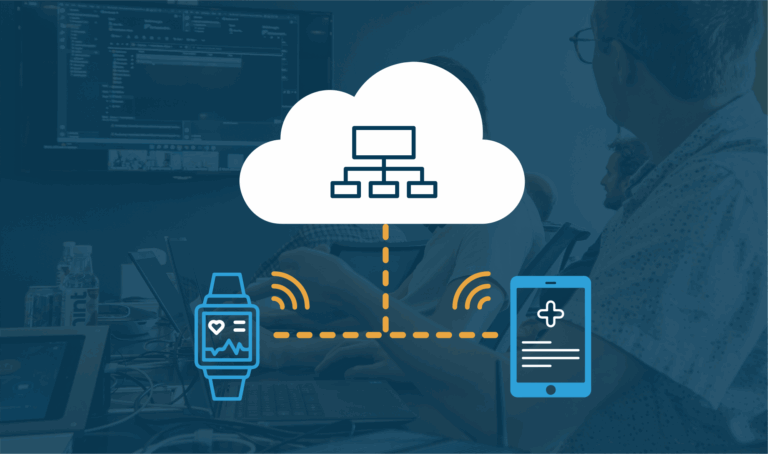Connected medical devices succeed or fail at the system level. Reliability, security, interoperability, and scalability are shaped long before validation through early architectural decisions, integration strategies, and risk alignment across embedded, mobile, and cloud layers.
At Punch Through, we approach risk reduction as a system-driven discipline, embedding critical path thinking, connectivity resilience, and compliance readiness into every layer of development from the outset. By structuring connected ecosystems for reliability early, we help teams move faster, validate more predictably, and avoid the costly pitfalls of fragmented system design.
Our approach reduces risk across connected development by:
- Framing system architecture early to control integration, interoperability, and data flow risks.
- Prioritizing critical path risks that shape technical, regulatory, and business outcomes.
- Structuring development for traceability and validation from the outset across embedded, mobile, and cloud layers.
- Designing connected ecosystems for scalability, longevity, and real-world adaptability.
Risk Reduction Starts at the System Level
Mitigating risk begins before a single line of code is written. We architect connected systems with a clear view of how each component—device firmware, mobile apps, and cloud services—interacts, shares data, and maintains integrity under real-world conditions.
Our teams structure:
- Clear interface definitions to prevent brittle integrations between subsystems.
- Connectivity strategies that account for real-world environmental variability and device limitations.
- Data flow models that protect reliability, latency, and regulatory compliance across platforms.
- Risk-driven partitioning of responsibilities across embedded, mobile, and cloud layers to minimize single points of failure.
By engineering risk controls into the system architecture itself, we help ensure that device connectivity is not a late-stage problem, but a foundational strength.
Critical Path Thinking That Reduces Surprises
We build development plans that prioritize critical risk points first by surfacing architectural, integration, and compliance risks early while there’s still time and flexibility to address them.
Our system-level critical path identification focuses on:
- High-impact architectural decisions that constrain future choices.
- Connectivity and interoperability dependencies that create downstream integration risks.
- Regulatory-sensitive components where design control and validation need tight coordination.
- Data integrity points where loss or delay could compromise safety, efficacy, or regulatory review.
This approach reduces late-stage surprises, builds flexibility into the development cycle, and shortens the path to stable V&V execution. By identifying critical risks at the system level, we help ensure that verification and validation efforts are not just smoother, but faster and more predictable thereby reducing regulatory friction and accelerating readiness.
Architecting for Scalability and Longevity
Risk is about what can break under real-world use, updates, or clinical expansion. We design connected medical solutions for system longevity by:
- Structuring firmware, mobile, and cloud updates into the system lifecycle.
- Supporting extensibility without creating brittle points in the ecosystem.
- Building for secure data management and access control across device generations.
Scalability and maintainability are structured into the connected system from the outset, supporting future growth, updates, and evolving regulatory needs without destabilizing system integrity or operational performance.
Proven Expertise in System-Level Execution
Our experience spans connected therapeutic devices, monitoring systems, and real-time data platforms built to withstand clinical, regulatory, and commercial pressures. We’ve architected systems that maintain connectivity in unpredictable environments, scale across mobile platforms, and sustain reliable operation through multi-year product lifecycles.
We don’t just develop components. We engineer connected systems that work cohesively, defensibly, and predictably when it matters most.
De-Risking by Design
Punch Through approaches connected medical development with a system-level mindset. We engineer reliability, connectivity, and compliance-readiness into every layer of the solution. By identifying risks early, structuring for integration strength, and designing for real-world longevity, we help our clients move from early design to regulatory submission and market launch with greater predictability, fewer delays, and stronger system performance.




